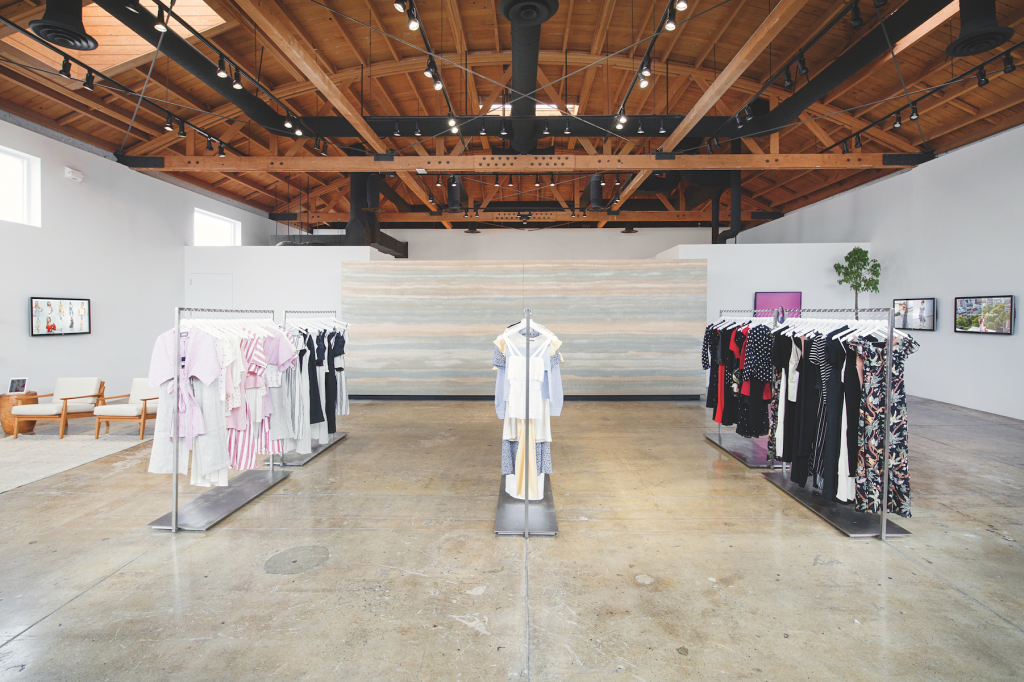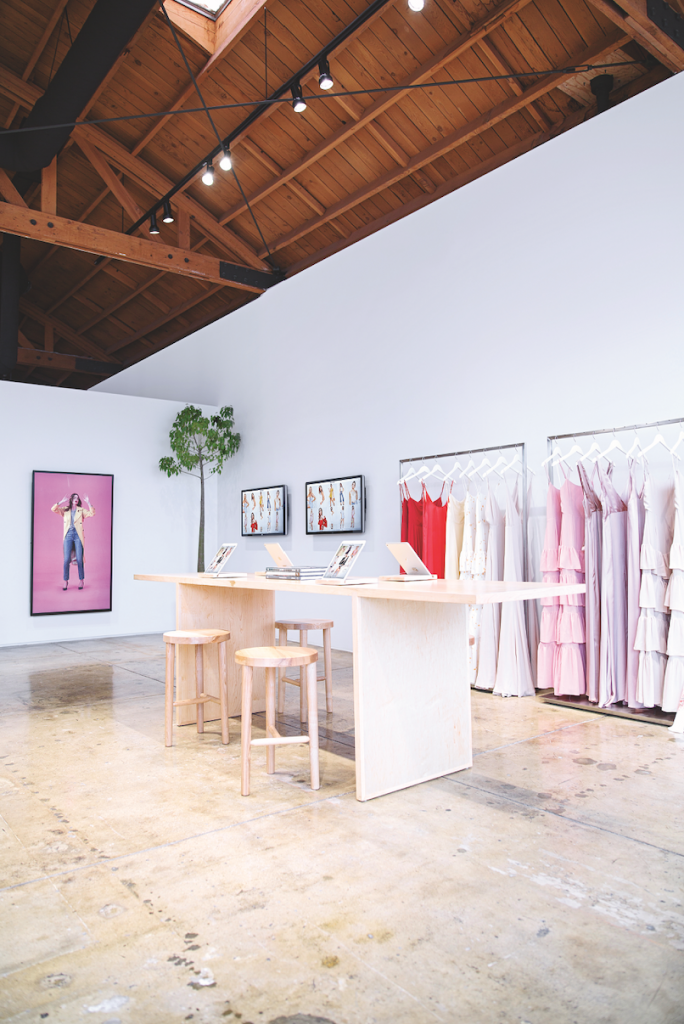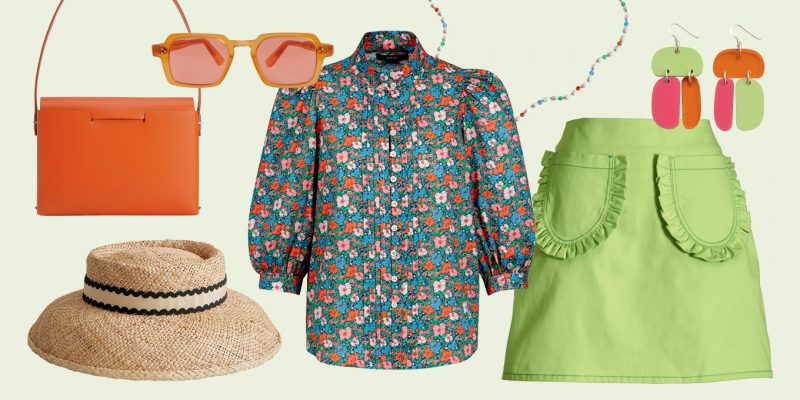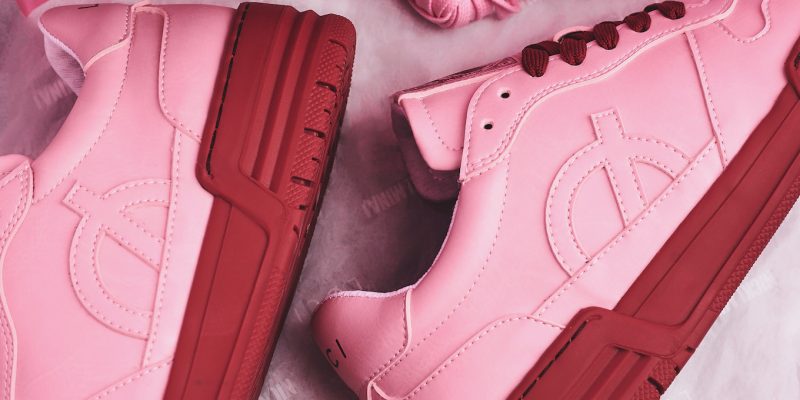Fashion
Sustainable Fashion Brand Reformation Is Evoking Change
The cult clothing brand is a leader in implementing environmentally proactive, sustainable practices and hopes to inspire others in the industry to follow suit.
by : Joanna Fox- Dec 14th, 2022

Reformation
At the Reformation head office, just south of downtown Los Angeles, one of the white walls has this phrase written across it in big letters: “Save the earth and look damn good doing it.” There are many corporate offices that have company slogans or mantras splashed all over the place but very few where the words actually ring true. Reformation is a welcome exception because unlike a lot of womenswear brands these days that say they are making strides in terms of their fashion practices and environmental impact, this one is actually doing it—and has been for years.
At the forefront of sustainable fashion, the L.A. based brand has been carbon-, waste- and water neutral since 2015 and is headed toward being climate-positive by 2025. When I visited its office this past summer, Kathleen Talbot, Reformation’s chief sustainability officer and vice-president of operations, took me on a tour of the space, which doubles as a factory where some of the clothing is made and shipped from. “We consider the sustainability implications of every decision we make,” says Talbot as she shows me the bolts and bolts of rescued deadstock fabric that will be used to make smaller runs of pieces.
By starting with smaller quantities of each item, the company can gauge interest and then either produce more based on demand or repurpose old pieces into new ones, avoiding overproduction and waste. Reformation has also come up with something it calls “the RefScale,” which tracks the company’s environmental footprint with an equation that takes into account the amount of carbon dioxide emitted, water used and waste generated. It then calculates how the company’s products help offset these impacts and tells consumers exactly what impact each garment has on the environment. And that’s just the beginning. From recycling 100 percent of its manufacturing waste to its “green” buildings to its dyeing and finishing practices, packaging and even shipping, everything is done in the most environmentally efficient way possible. And it’s Talbot’s job to make sure of that.
Reformation isn’t just at the forefront behind the scenes, though; it’s also innovating and elevating its in-store customer experience with a tech driven retail concept, which lets shoppers use a touchscreen to view product inventory and build a personalized dressing room based on what’s available in-store. They receive a text once their dressing room is ready, and the items will be there waiting for them in a special “two-way” closet. The dressing rooms also have touchscreens for ordering more sizes or getting help from staff, so customers can place items they don’t want back in the closet and staff on the other side can take them away and replace them with new items in real time. Even more good news is that this tech shopping experience will be offered at the brand’s new Yorkville store—the first of its kind in Canada—which opened on December 14.
We spoke with Reformation CEO Hali Borenstein about the challenges of sustainability, heading toward the brand’s climate-positive goal and the future of expansion in the Canadian market.
 PHOTOGRAPHY, COURTESY OF REFORMATION
PHOTOGRAPHY, COURTESY OF REFORMATIONWhat do you want the consumer to understand when they put a piece of Reformation clothing in their closet?
“Two things. When Reformation started sustainability in fashion, no one cared. Today, that’s obviously different. The conversation on sustainability has started, but consumers are not fully there yet on what makes something sustainable, what it means and how they have so much power to drive apparel businesses to do better. The first thing is education on the mission—what it means for the world and the impact [it can have]. The second thing is that we prioritize the product: Making sure those jeans fit well, feel good and make someone feel confident is very important. There is a misconception out there that you can’t have both—that you can’t look good in and feel good about your product. I hope Ref can really change that so you don’t have to compromise when you’re getting ready.”
What is your brand focus heading into 2023?
“The brand has grown a lot in the past couple of years; there is definitely momentum, especially in Canada—one of our favourite markets. When we think about how to continue to tell our story and educate consumers about sustainability in fashion, and when we think about bringing sustainable fashion to everyone, it’s all about how we expand our presence both geographically and from a category perspective. So, geographically, we are very focused on [reaching] more customer —specifically in Canada with the opening of Reformation Yorkville, our second store there. The second big focus for us is category expansion. Shoes are a really important part of our business they are arguably the most sustainable dress shoes on the market, and I am so proud. So how do we get more people to understand? Because, frankly, shoes are so bad for the environment. Really pushing and supporting the growth of categories where there is really wide space in terms of sustainability and helping consumers understand that is a really huge opportunity for us.”
You’ve been carbon-neutral since 2015. And you want to be climate-positive by 2025. How’s that going?
“We made a commitment to do it, so we are on our way. It is really hard, [and] 2025 is just around the corner. The team is doing incredible work in terms of material innovation, the international transportation work stream is really important [and there are also] carbon-removal projects—it’s all under way. We have been really public about it; we have actually open-sourced our road map. We think we have the path now, and we want other brands to do the same thing.”
 PHOTOGRAPHY, COURTESY OF REFORMATION
PHOTOGRAPHY, COURTESY OF REFORMATIONHow does shipping work?
“Shipping is certainly something we’re thinking about. Boat and air definitely have different impacts. The other thing to think about is how we can touch the garment less. Returns are a huge thing; you are shipping it there, back, there, back. So we are thinking: Should we have return centres? Can we sell from stores? How do we localize a product so there is less transportation overall? How can we be smarter when it leaves the factory—wherever that is globally—and ensure it gets to the closest end point without five different touches?”
Do you see more brands dedicating a team of in-house experts to help with sustainability?
“Definitely—you have to. If you don’t bring in resident experts and dedicate a team, you can’t do it. So when you really let that team influence the whole organization, you get better results. It’s exciting to see new brands pop up that have the same ethos.”
How can you continue growing but still keep sustainability on track?
“Scale unveils new opportunities. Through scale, we now have funding to put solar panels on some of our biggest factories. With more funding, we can help with our dyeing process in partnership with our biggest dyers. We are investing in new information and partners. Scale enables growth.”
Speaking of growth, where did this tech driven retail concept come from?
“If you went to our stores originally, [you’d have found] a wild situation. Associates had no time to talk to the customer because all they were doing was finding sizes or putting things away. They weren’t able to build relationships. What we realized is that there was no high-volume, high end customer experience. We set out to do that. We still wanted to service a large group of customers but not have it feel like a fast-fashion shop or a basic mall shop. So we built this in-house technology that enables a more elevated experience, even at scale. I think we have [this retail technology] or some variation of it in 75 percent of our stores. Our goal is to have it in as many stores as possible. I think it is one of the things that makes Reformation unique.”
Newsletter
Join our mailing list for the latest and biggest in fashion trends, beauty, culture and celebrity.
More from Fashion
Read Next

Beauty
The Best Met Gala Beauty Looks Of All Time
From Taylor Swift's 'Bleachella' era to Rihanna's iconic 2011 braids, meet the best beauty moments in Met Gala history.
by : Katie Withington- Apr 26th, 2024

Culture
Benny Blanco Says He Fell in Love With Selena Gomez Without ‘Even Noticing’ It
Allow Benny Blanco to tell the straight-from-a-rom-com story of how he realized his feelings for his girlfriend and longtime friend.
by : Alyssa Bailey- Apr 26th, 2024

Culture
This University Elevates Women to New Professional Heights
You shouldn’t have to pause your life to move forward in your career.
by : ELLE Canada- Apr 16th, 2024




